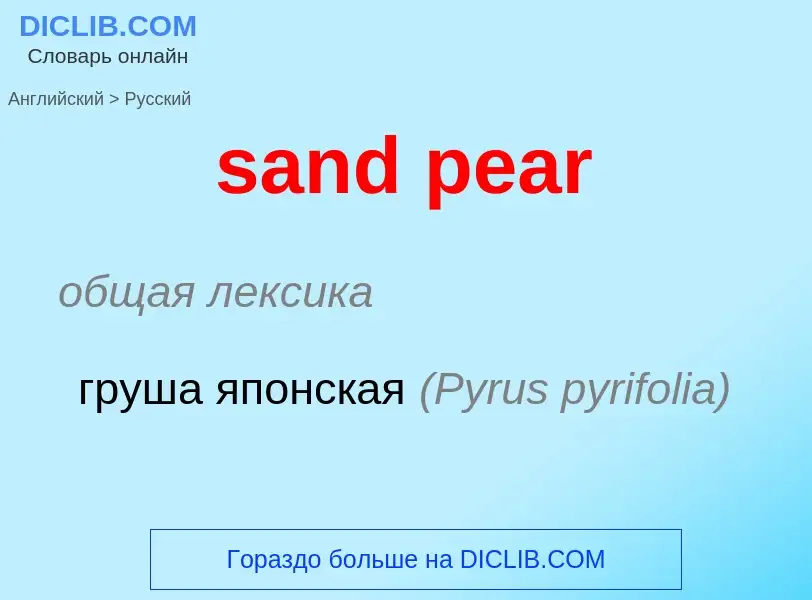Перевод и анализ слов искусственным интеллектом ChatGPT
На этой странице Вы можете получить подробный анализ слова или словосочетания, произведенный с помощью лучшей на сегодняшний день технологии искусственного интеллекта:
- как употребляется слово
- частота употребления
- используется оно чаще в устной или письменной речи
- варианты перевода слова
- примеры употребления (несколько фраз с переводом)
- этимология
sand pear - перевод на русский
общая лексика
груша японская (Pyrus pyrifolia)
Смотрите также
общая лексика
груша песчаная (Pyrus pyrifolia)
Википедия

Pyrus pyrifolia is a species of pear tree native to East Asia. The tree's edible fruit is known by many names, including: Asian pear, Japanese pear, Chinese pear, Korean pear, Taiwanese pear, apple pear, zodiac pear, three-halves pear, papple, naspati and sand pear. Along with cultivars of P. × bretschneideri and P. ussuriensis, the fruit is also called the nashi pear. Cultivars derived from Pyrus pyrifolia are grown throughout East Asia, and in other countries such as India, Nepal, Australia, New Zealand, and the United States (e.g., California). Traditionally in East Asia the tree's flowers are a popular symbol of early spring, and it is a common sight in gardens and the countryside.
The fruits are not generally baked in pies or made into jams because they have a high water content and a crisp, grainy texture, very different from the European varieties. They are commonly served raw and peeled. The fruit tends to be quite large and fragrant, and when carefully wrapped (it has a tendency to bruise because of its juiciness), it can last for several weeks or more in a cold, dry place.











